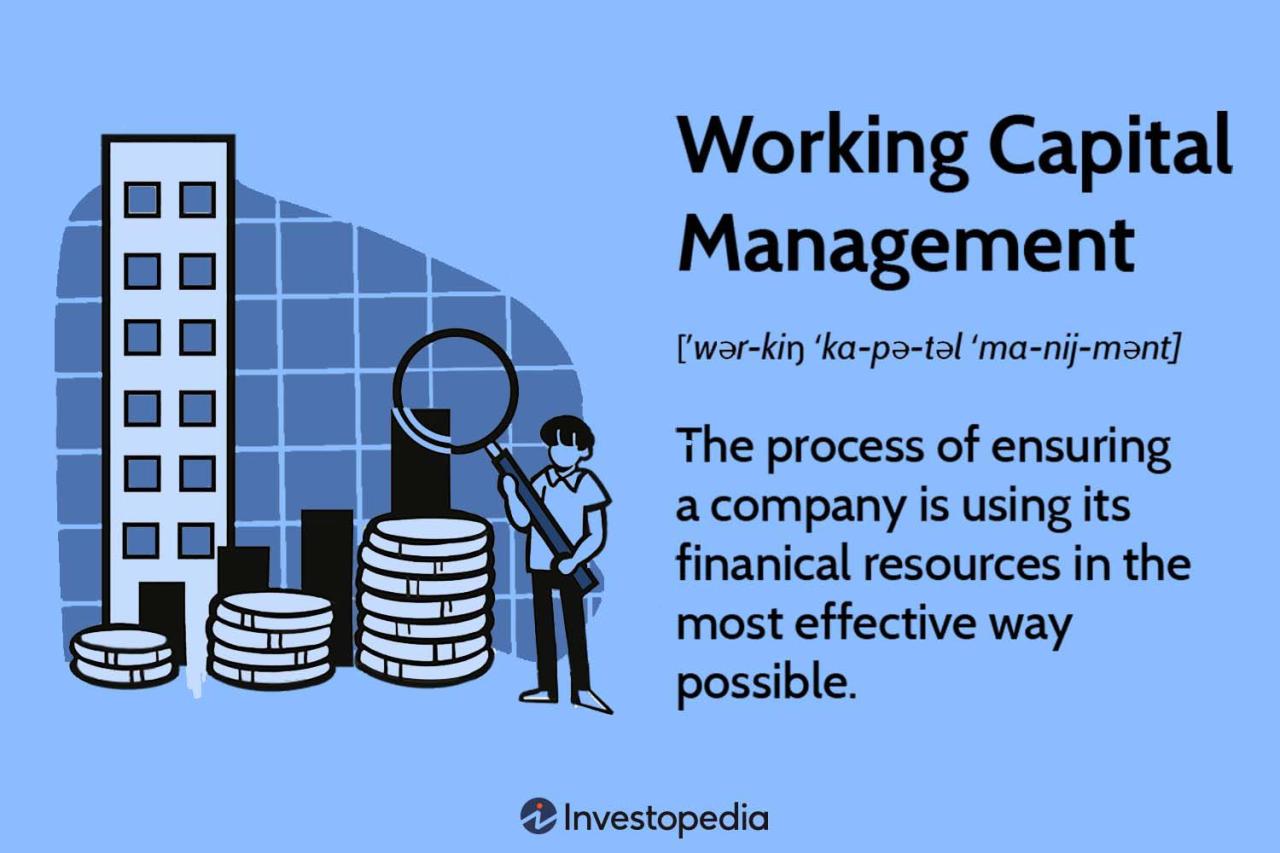What can you use a business line of credit for? A business line of credit is a flexible financing option that can be a valuable tool for businesses of all sizes. It provides access to a revolving line of credit that can be drawn upon as needed, offering a safety net for unexpected expenses or opportunities for growth.
Imagine a business owner facing a sudden surge in demand for their products. With a business line of credit, they can quickly access funds to purchase additional inventory, meet the increased demand, and capitalize on the opportunity. This is just one example of how a business line of credit can be a strategic asset for businesses.
Understanding Business Lines of Credit
A business line of credit is a revolving credit account that allows businesses to borrow money as needed, up to a predetermined credit limit. It’s like a credit card for businesses, providing flexibility and access to funds when you need them.
Advantages of Business Lines of Credit
Business lines of credit offer several advantages for businesses:
- Flexible Funding: Businesses can borrow only what they need, when they need it, and pay interest only on the amount borrowed. This flexibility is particularly beneficial for businesses with fluctuating cash flow needs.
- Improved Cash Flow: By providing access to quick and easy funding, business lines of credit can help businesses manage cash flow effectively, especially during seasonal fluctuations or unexpected expenses.
- Building Credit: Responsible use of a business line of credit can help build a business’s credit score, making it easier to access other forms of financing in the future.
- Predictable Interest Rates: Business lines of credit often have fixed interest rates, providing businesses with predictable borrowing costs.
Potential Drawbacks of Business Lines of Credit
While business lines of credit offer numerous benefits, it’s crucial to consider their potential drawbacks:
- Interest Costs: Interest charges can accrue if the borrowed amount is not repaid promptly, impacting the business’s profitability.
- Credit Limit Restrictions: Businesses are limited to borrowing up to their approved credit limit, which might not be sufficient for larger projects or investments.
- Potential for Overspending: The ease of access to funds can lead to overspending, creating a burden on the business’s financial health.
Comparison with Other Forms of Business Financing
Business lines of credit are just one type of business financing. Here’s a comparison with other options:
| Financing Option | Description | Advantages | Disadvantages |
|---|---|---|---|
| Business Line of Credit | Revolving credit account with a predetermined limit | Flexible funding, improved cash flow, credit building, predictable interest rates | Interest costs, credit limit restrictions, potential for overspending |
| Term Loan | Fixed amount of money borrowed with a set repayment schedule | Predictable monthly payments, lower interest rates than lines of credit | Less flexibility, can be challenging to qualify for |
| SBA Loan | Government-backed loans for small businesses | Lower interest rates, longer repayment terms, less stringent credit requirements | Lengthy application process, more stringent eligibility criteria |
| Equity Financing | Raising capital by selling ownership shares in the business | No debt obligation, potential for significant funding | Loss of control, dilution of ownership |
Typical Uses of a Business Line of Credit
A business line of credit is a flexible financing option that can be a valuable tool for businesses of all sizes. It provides access to funds on an as-needed basis, offering a safety net for unexpected expenses or opportunities. A business line of credit can be used for a variety of purposes, depending on the specific needs of the business.
Short-Term Working Capital Needs
A business line of credit can be a crucial resource for managing short-term working capital needs. This includes expenses related to day-to-day operations, such as:
- Inventory Purchases: Businesses can use a line of credit to purchase inventory when needed, ensuring they have sufficient stock on hand to meet customer demand.
- Payroll Expenses: A line of credit can help businesses cover payroll expenses during seasonal fluctuations or unexpected downturns in business activity.
- Operating Expenses: Lines of credit can be used to pay for utilities, rent, marketing, and other ongoing operational costs.
- Unexpected Expenses: Businesses can utilize a line of credit to address unexpected expenses, such as repairs, equipment failures, or legal fees.
Seasonal Fluctuations in Business Activity
Many businesses experience seasonal fluctuations in their activity, leading to variations in cash flow. A line of credit can provide a buffer during slow periods and help businesses manage these fluctuations.
For example, a retail business might need additional funds during the holiday season to meet increased demand for products. A line of credit can provide the necessary capital to stock up on inventory and manage the higher sales volume.
Expansion or Growth Opportunities
A business line of credit can be a valuable tool for businesses looking to expand or grow. It can provide the necessary capital to:
- Acquire New Equipment: Businesses can use a line of credit to purchase new equipment or machinery to increase production capacity or improve efficiency.
- Expand Operations: Lines of credit can help finance the expansion of existing facilities, the opening of new locations, or the acquisition of other businesses.
- Marketing and Advertising: Businesses can utilize a line of credit to fund marketing campaigns and advertising initiatives to reach new customers and expand their market share.
- Research and Development: Lines of credit can provide funding for research and development projects, allowing businesses to innovate and develop new products or services.
Specific Examples of Business Line of Credit Applications: What Can You Use A Business Line Of Credit For

A business line of credit can be a valuable tool for various business needs, offering flexibility and financial support when needed. Here are some specific examples of how businesses can utilize a line of credit:
Examples of Business Line of Credit Applications Across Sectors
A business line of credit can be utilized across various business sectors, each with its own unique needs and applications. Here’s a table illustrating some typical uses for a business line of credit in different sectors:
| Business Sector | Specific Use Case | Example Scenario | Benefits |
|—|—|—|—|
| Retail | Seasonal Inventory Purchases | A clothing retailer needs to stock up on winter apparel before the holiday season. They can use a line of credit to purchase inventory and avoid tying up their working capital. | Reduced risk of stockouts, increased sales during peak season, improved cash flow. |
| Manufacturing | Equipment Upgrades or Repairs | A manufacturing company requires a new piece of machinery to increase production capacity. They can use a line of credit to finance the purchase and avoid delaying the upgrade. | Improved efficiency, increased output, reduced downtime. |
| Services | Marketing and Advertising Campaigns | A marketing agency wants to launch a new advertising campaign to attract new clients. They can use a line of credit to cover the costs of campaign development and execution. | Increased brand awareness, lead generation, improved customer acquisition. |
| Construction | Project Financing | A construction company needs to secure financing for a new project. They can use a line of credit to cover the costs of materials, labor, and equipment. | Secure funding for projects, flexibility in managing cash flow, faster project completion. |
Using a Business Line of Credit for Inventory Management
A business line of credit can be a valuable tool for managing inventory, particularly for businesses with seasonal fluctuations in demand. By using a line of credit, businesses can purchase inventory when prices are low and avoid stockouts during peak seasons. For example, a toy retailer could use a line of credit to purchase a large inventory of holiday toys in the summer when prices are lower. This would allow them to offer competitive prices during the holiday season and avoid running out of popular items.
Using a Business Line of Credit for Marketing and Advertising Campaigns
A business line of credit can be used to finance marketing and advertising campaigns, enabling businesses to reach new customers and expand their market reach. For example, a small business owner could use a line of credit to launch a social media advertising campaign to promote their new product. This would allow them to reach a wider audience and generate more leads.
Using a Business Line of Credit for Equipment Upgrades or Repairs
A business line of credit can be a valuable tool for financing equipment upgrades or repairs, ensuring that businesses have the necessary resources to maintain their operations. For example, a restaurant owner could use a line of credit to purchase a new commercial oven or repair a broken dishwasher. This would help to ensure that the restaurant can continue to operate smoothly and avoid disruptions to service.
Considerations Before Obtaining a Business Line of Credit
Before you dive into the world of business lines of credit, it’s crucial to take a step back and assess your business’s readiness. Applying without careful consideration could lead to unforeseen financial burdens and even jeopardize your business’s stability.
Assessing Your Business’s Creditworthiness
Lenders will scrutinize your business’s financial health before extending a line of credit. Understanding your creditworthiness is vital to securing favorable terms and ensuring a smooth application process.
- Check your credit score: Your business credit score is a numerical representation of your creditworthiness, similar to your personal credit score. You can obtain a free business credit report from major credit bureaus like Experian, Equifax, and Dun & Bradstreet. A higher credit score indicates a lower risk to lenders and can result in better interest rates and borrowing terms.
- Review your financial statements: Lenders will examine your balance sheet, income statement, and cash flow statement to gauge your financial stability and profitability. Ensure your financial records are accurate, up-to-date, and reflect your business’s true financial standing.
- Analyze your debt-to-equity ratio: This ratio measures your business’s leverage and indicates the proportion of debt financing compared to equity. A lower debt-to-equity ratio generally signifies a healthier financial position and can make your business more attractive to lenders.
Steps Involved in Securing a Business Line of Credit, What can you use a business line of credit for
The process of securing a business line of credit typically involves several steps. Understanding these steps will help you navigate the application process and increase your chances of success.
- Research and compare lenders: Different lenders offer varying terms, interest rates, and eligibility requirements. Compare options from banks, credit unions, and online lenders to find the best fit for your business’s needs.
- Gather necessary documentation: Lenders will require various documents to assess your creditworthiness and evaluate your application. These typically include business plans, financial statements, tax returns, and personal credit reports.
- Submit your application: Once you’ve chosen a lender, carefully complete the application form and submit all required documentation. Be prepared to answer questions about your business’s operations, financial history, and future plans.
- Negotiate terms and interest rates: Once your application is approved, you can negotiate the terms and interest rate of the line of credit. Leverage your research and creditworthiness to secure favorable conditions. Consider factors like interest rates, fees, repayment terms, and credit limits.
Tips for Negotiating Favorable Terms and Interest Rates
Negotiating favorable terms and interest rates is crucial to maximizing the benefits of a business line of credit. Here are some tips to help you secure the best possible deal:
- Shop around and compare offers: Don’t settle for the first offer you receive. Research different lenders and compare their terms and interest rates. This competitive approach can help you secure a more advantageous deal.
- Leverage your creditworthiness: A strong credit history and healthy financial standing can give you leverage during negotiations. Highlight your business’s credit score, financial statements, and debt-to-equity ratio to demonstrate your creditworthiness and attract favorable terms.
- Negotiate fees and terms: Don’t hesitate to ask about potential fees, such as annual fees, maintenance fees, and late payment fees. Negotiate these fees to minimize their impact on your overall borrowing costs.
- Consider alternative financing options: If you’re unable to secure favorable terms on a business line of credit, explore alternative financing options, such as term loans, equipment financing, or merchant cash advances. These options may offer different terms and interest rates that could better suit your business’s needs.
Managing a Business Line of Credit

A business line of credit can be a valuable tool for managing cash flow and financing short-term needs. However, it’s crucial to manage it effectively to minimize interest costs and maintain a healthy financial position.
Managing Interest Costs
To minimize interest costs on a business line of credit, it’s essential to understand the terms of your agreement and develop strategies for managing your utilization.
- Pay down the balance as quickly as possible: Aim to pay down the balance as quickly as possible to reduce the amount of interest you accrue. This can be achieved by making regular payments and prioritizing debt repayment.
- Avoid drawing the full credit line: Try to avoid drawing the full credit line unless absolutely necessary. This will help you maintain a lower balance and minimize interest charges.
- Negotiate a lower interest rate: Explore opportunities to negotiate a lower interest rate with your lender, especially if your business has a strong credit history and a healthy financial track record.
- Consider a revolving line of credit: A revolving line of credit allows you to draw and repay funds as needed, providing flexibility. However, interest is typically charged on the outstanding balance, so it’s essential to manage utilization effectively.
Monitoring and Tracking Utilization
Regularly monitoring and tracking your business line of credit utilization is critical for maintaining control and preventing overspending.
- Set up a system for tracking: Establish a system for tracking your business line of credit utilization, including the balance, interest rates, and payment due dates. This can be done using spreadsheets, accounting software, or online banking tools.
- Review your utilization regularly: Review your utilization regularly, ideally on a monthly basis, to ensure you’re staying within your credit limit and managing your balance effectively.
- Set spending limits: Consider setting spending limits for your business line of credit to help prevent overspending and ensure you’re using it for its intended purpose.
- Avoid exceeding your credit limit: Exceeding your credit limit can damage your credit score and potentially lead to penalties from your lender.
Maintaining a Good Credit Score
A good credit score is essential for securing favorable terms on business loans and lines of credit.
- Make timely payments: Make timely payments on all your business obligations, including your business line of credit. Late payments can negatively impact your credit score.
- Maintain a low credit utilization ratio: Your credit utilization ratio is the percentage of your available credit that you’re using. Aim to keep this ratio below 30% to maintain a healthy credit score.
- Avoid excessive applications: Each time you apply for a new line of credit, it can result in a hard inquiry on your credit report, which can temporarily lower your score.
- Monitor your credit report: Regularly monitor your credit report for any errors or discrepancies. You can obtain a free copy of your credit report from the three major credit bureaus (Equifax, Experian, and TransUnion).
Paying Down the Balance
Paying down the balance on your business line of credit can help you reduce interest costs and improve your financial position.
- Develop a repayment plan: Create a repayment plan that Artikels your payment schedule and how much you’ll pay each month.
- Prioritize debt repayment: Consider prioritizing debt repayment over other expenses, especially if you have high-interest debt.
- Consider a debt consolidation loan: If you have multiple debts, a debt consolidation loan can help you simplify your payments and potentially lower your interest rate.
- Explore alternative financing options: If you’re struggling to repay your business line of credit, explore alternative financing options, such as invoice financing or equipment financing.
Last Recap

In conclusion, a business line of credit can be a powerful tool for managing cash flow, seizing opportunities, and navigating the challenges of running a business. By understanding the different applications, considering the potential benefits and drawbacks, and carefully managing the line of credit, businesses can harness its potential to achieve their financial goals and propel their growth.
FAQ Section
How does a business line of credit work?
A business line of credit is like a revolving credit card for businesses. You are approved for a specific amount of credit, and you can draw on that credit as needed. You only pay interest on the amount you use, and you can repay the balance over time.
What is the difference between a business line of credit and a business loan?
A business loan is a fixed amount of money that you receive all at once, while a business line of credit is a revolving line of credit that you can draw on as needed. A business loan has a fixed interest rate, while a business line of credit typically has a variable interest rate.
How can I get a business line of credit?
To get a business line of credit, you will need to apply with a bank or other financial institution. They will review your business’s financial history and creditworthiness to determine if you qualify.
 Norfolk Publications Publications ORG in Norfolk!
Norfolk Publications Publications ORG in Norfolk!

